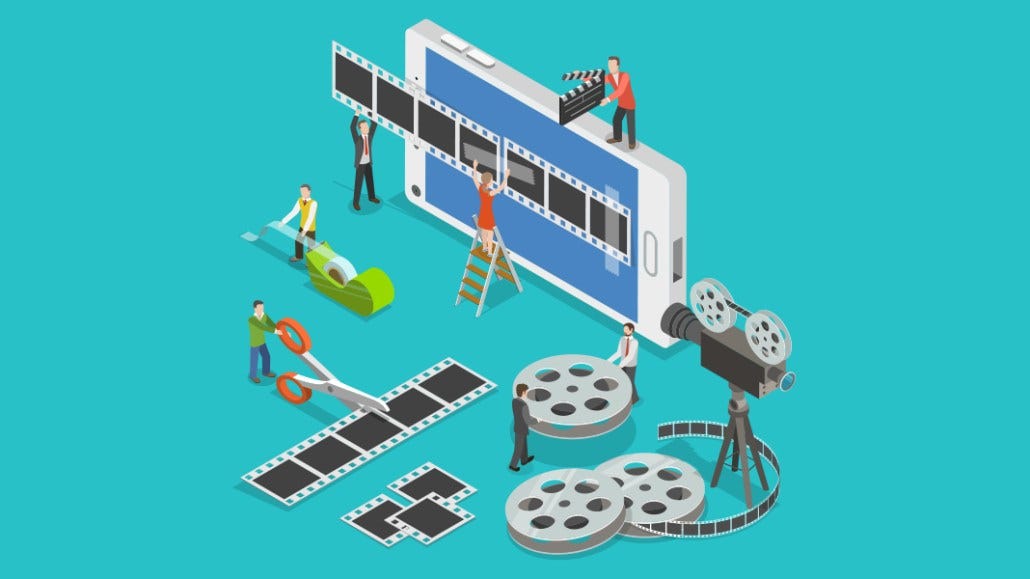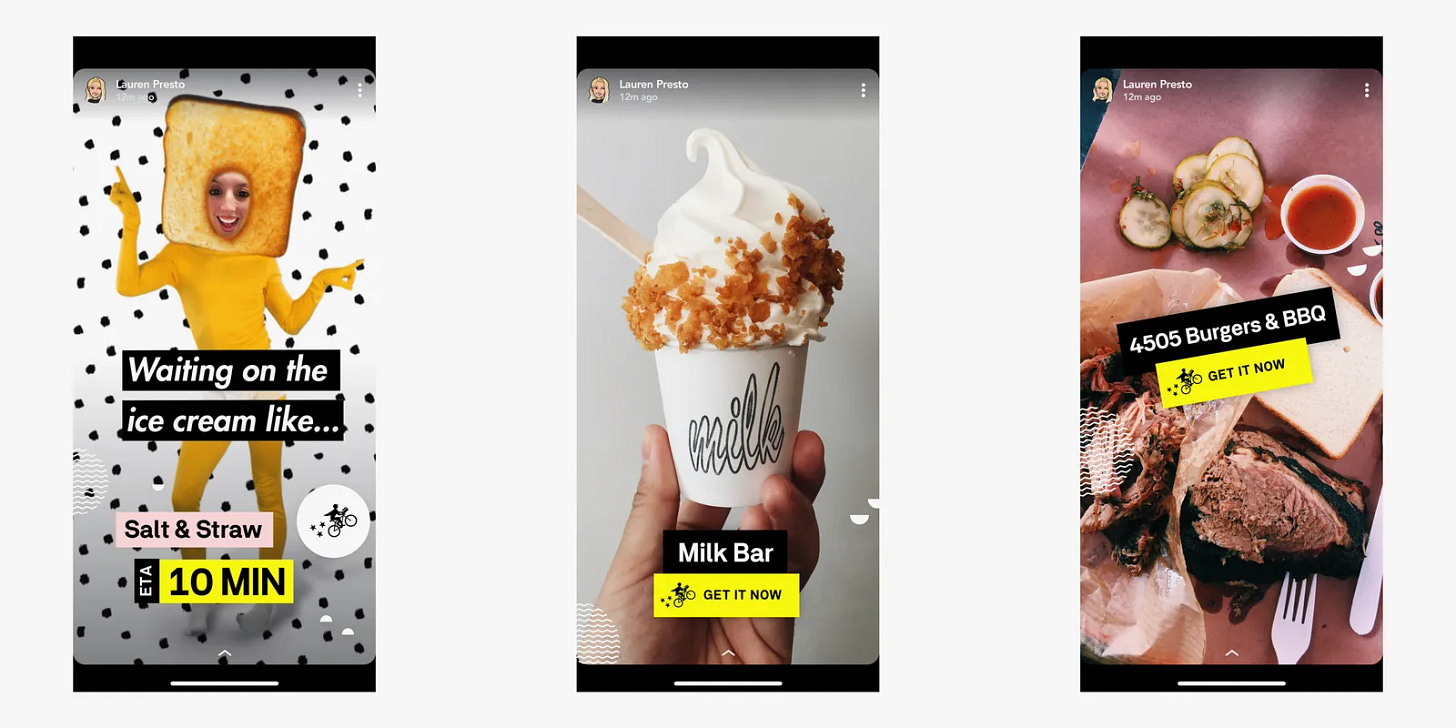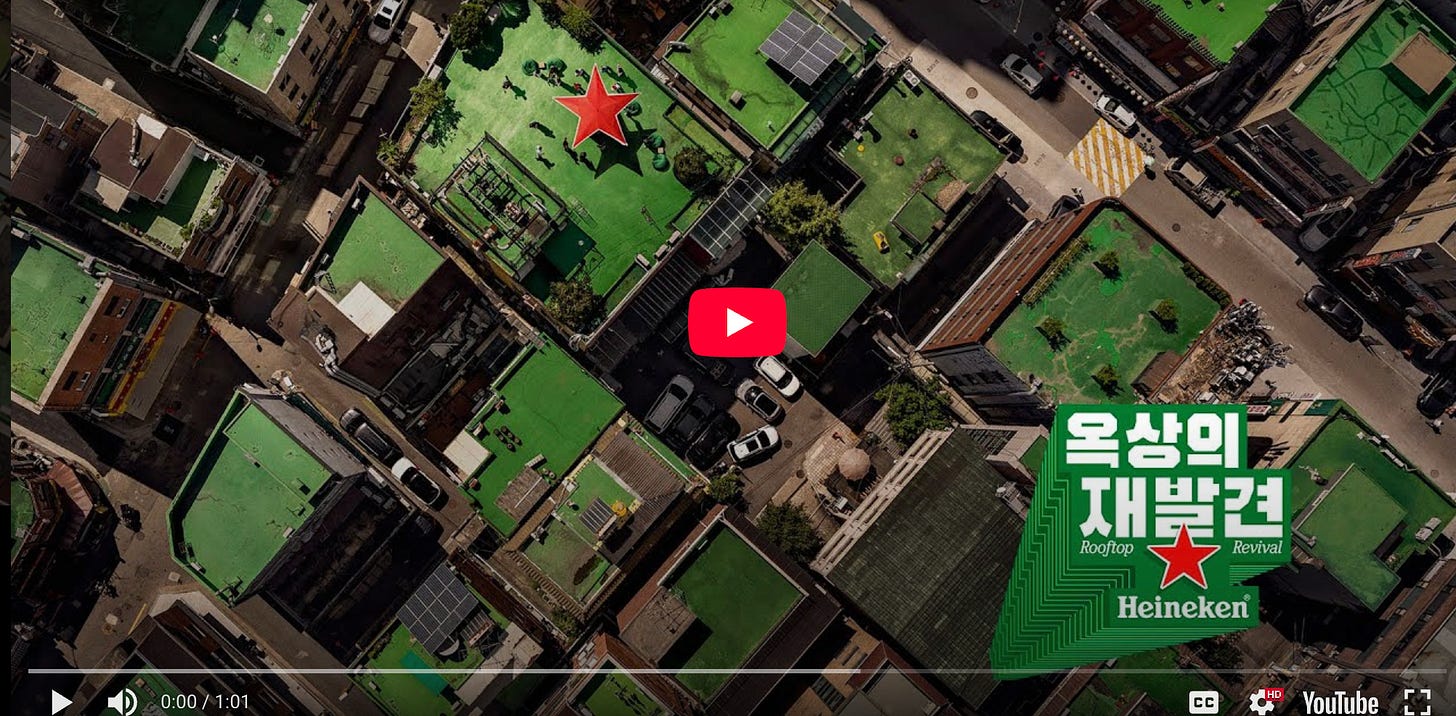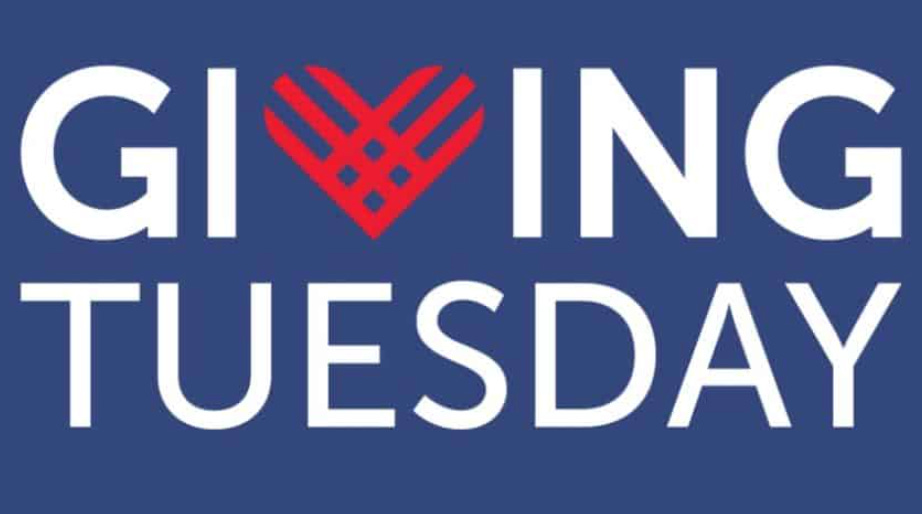SPN. 180: Deploying the “Long and Short”
Plus, Investing in Brand ✨ and 9 Actionable Tips to Build High Performing Landing Pages
A very warm welcome to all the new subscribers. You’ve joined a community of 4k+ marketing and fund raising operators at mission-driven Orgs. I’m thrilled to have you as readers and truly appreciate your feedback and support.
In this week’s SPN:
Foundations of a YouTube strategy
Why Brand Investment is Critical to Fundraising
9 Actionable Tips to Build High Performing Landing Pages
Plenty of Jobs & Opps
Let’s jump in.
🔐 Privacy That Builds Donor Trust
Fundraise Up is built for GDPR, CCPA, and global privacy compliance - reviewed annually and validated with partners like Thoropass.
✔️ Smart, region-based marketing consent
✔️ First-party cookies + built-in banners where required
✔️ Secure data rights: access, deletion, opt-outStrong compliance isn’t just protection. It drives trust, conversion, and repeat giving. For donors and your compliance team, Fundraise Up is the safest way to fundraise online.
👉 Talk to Fundraise Up
Game-changer? It is for me!
Deploying the “Long and Short” to Win
Wally Olins once said: “There’s only one true way to gauge the value of a brand, and that is to sell it.”
Many Orgs don’t ascribe a value to their brand because it’s not easy to measure it, so instead they measure the effectiveness of their marketing spend. You might recognize that your brand is doing something positive for your Org, but it’s challenging to pinpoint exactly what that “something” is.
What many fundraising leaders fail to appreciate (and I was one of them for quite some time #guilty) is that brand value accrues over a longer period of time than the immediate “value” generated by direct response-driven marketing activity.
Q4 has a strong focus on delivering conversions. It’s also a critical window to build brand that drives resilience and long-term growth into the new year.
Deploying a balanced approach to fundraising - combining Brand Building (The Long) and the Fundraising Activation (The Short) - will be key come January when the hype of EOY has faded.
→ Plan on an evergreen campaign. Consistently fund it throughout 2026. Measure your share of search and share of social engagement vs your peers, and track the incremental number of donors and corporates lining up to contribute period of period. For anyone who needs to hear it: brand has a longer look back window.
Why Brand Investment is Important:
1️⃣ Superior Financial Returns: Top-ranked brands, built on strong equity, outperform the world market by 74% (McKinsey). Brand is a driver of superior financial returns.
2️⃣ Massive Advantage: Brands perceived as meaningful and different grew their value by an average of $12.3 billion (nearly double the average). I enjoyed this: Kantar Brandz make the case for long-term brand-building investment.
3️⃣ Immediate & Future Payoff: Just a 1% increase in brand awareness delivers immediate benefits (0.4% lift in short-term) while securing the future (lift in long-term revenue 0.6) (Google/Nielsen).
For Orgs, long-term brand building and short-term fundraising activation should be closer to 60/40:
~60% brand (trust, familiarity, salience)
~40% activation (campaigns, appeals, EOY) you get to do more with less when you invest in brand. CAC goes down.
Most nonprofits operate at 5/95 and then wonder why Q1 always flatlines.
If You Can Only Do 3 Things in Q4 to Build Brand →
Show up in video, especially YouTube Shorts
Create a consistent donation experience because UX is part of brand
Tell one signature story repeatedly
Good read: How YouTube became essential to your audience and your brand growth. With tens of millions of donors accessing across all screens it’s a no-brainer to start your brand efforts here. YouTube is a distribution network.
Don’t stop investing in brand this Q4. You’ll pay for it in Q1 if you do.
Bonus thought:
Build your YouTube 2026 strategy around the following:
Always-on brand creative for broad reach
Mid-funnel transparency content (“where your money goes”)
Conversion-led stories from the field or from Survivors
Understanding how to create dynamic short-form video - Reels, Shorts, TikToks - is the single most important fundraising skill for building Orgs of the future.
The future is being defined by short-form storytelling and you need to pair content creation with structure:
Build a long-term narrative, not just short-term engagement.
Target an audience that’s specific to your Org. Random views don’t convert.
Design a fundraising (monetization) funnel that can scale past the initial burst of internet attention.
Short-form content sparks attention. Brand converts it into revenue. And brand is that compounding engine behind every great fundraising program.
Reads From My Week 📚
Don’t overlook the “long”: building a brand drives performance results (Think with Google)
Wally Olins: The father of “Territory Branding” (Grapheine)
Some thoughts on AI (Gavin Baker)
The Big Dangers of Big Bubbles with Big Wealth Gaps (Ray Dalio)
Musk’s xAI and Nvidia to Develop Data Center in Saudi Arabia (WSJ)
The New AI Consciousness Paper (Astral Codex Ten)
The Next Evolution of Marketing Measurement (AdWeek)
Gifts You Can Give That Give Back (Nick Kristof)
9 Actionable Tips to Build High Performing Landing Pages
This is what you need to focus on with your landing pages. Obviously, yes, the basics. But layer these 9 things on top, and you will 2-3x conversion rate. Here we go.
1. Sticky CTAs.
Design for the (right) thumb, it’s 85-90% of the population. On mobile, always have a persistent CTA button visible once a user scrolls past the hero section. Most of your traffic is on phones, so don’t make donors scroll back up looking for the CTA. A sticky footer bar with the program name, suggested donation amount, and a bold CTA can boost impulse taps. I’ve seen this simple tweak lift mobile conversion rates – it keeps the donation checkout just one thumb-press away at all times.
2. Answer Questions Before They’re Asked.
If donors frequently ask your support team “Does this come with X?” or “Where do you do Y?”, that’s an obvious sign to address it on the landing page. Take your top FAQs and bake them into your content (don’t hide them in a tiny FAQ dropdown no one reads).
Example: If everyone asks whether their gift stays local → add a clear line: “Your donation directly supports programs in your community.”
If donors worry about overhead → include a simple impact breakdown or a line on accountability.
If disaster donors ask how fast aid is deployed → spell it out: “Emergency teams mobilize within 24 hours.”
If monthly donors ask whether they can cancel anytime → say it upfront next to the recurring toggle.
Only half your visitors will scroll past the first screen, so make the essentials unmistakable. A landing page that anticipates donor questions removes friction, reduces uncertainty, and makes giving feel safe and obvious.
3. Segmented Pages for Specific Audiences.
One-size-fits-all pages are buzz kills… do you want the same thing everyone else got too? No one does. Create dedicated landing pages for each major audience or angle.
Example: The messaging that moves a long-time supporter (“Your continued generosity keeps families in housing all year”) won’t move a disaster donor (“Your gift delivers emergency relief within 72 hours”). A pet-loving donor wants to see animals saved. A climate donor wants proof of carbon impact. A corporate CSR lead wants brand safety, employee engagement, and reporting.
When donors land on a page that feels like it was made for them, relevance shoots up and so does conversion. Think of it as putting every donor on the fast track that matches their reason for giving, instead of forcing everyone down the same hallway.
4. No Escape Navigation.
Treat your landing page like a high-converting mall kiosk, not a full “store” website. That means stripping out the top nav and any unnecessary links that let people wander off. Every extra link (Home, About Us, random program categories) is an invitation to lose the user to another page, and one that isn’t conversion-oriented, either. Keep the journey linear and focused. The only clickable options should either answer a burning question or lead the user closer toward the donation checkout. No detours, no leaks in the funnel. It’s the express train to checkout.
5. Micro-Commitments & Opt-In.
Get your visitor to say a small “yes” before the big “YES.” Interactive elements like a quick quiz (“Find your perfect program in 3 clicks”) or a build-your-own-bundle step can work wonders. Another easy place to do this is your email opt-in; don’t just ask for the email, ask a question first. It engages the user… instead of passively reading, they’re actively clicking and investing effort. This “foot-in-the-door” tactic makes the eventual donation feel easier.
6. Exit-Intent Rescue.
I don’t see this get activated nearly enough. Don’t let them leave without a fight. If a visitor drags their mouse toward the close tab button or shows exit intent, trigger a last-second hook. This could be a special Match, a helpful prompt, or an monthly offer to keep them in your ecosystem. The idea is to catch the maybe-later donor and give them a reason to stay or return. You’d be surprised how many almost-donor you can save with a thoughtful exit popup. You’re not begging, you’re extending a friendly note to show you deliver on our mission.
7. CEO/ED’s Note.
Put a face and name behind the promise of your mission. A short, sincere note from your CEO.ED can humanize the page and build trust at scale. It could be a few lines near the bottom or make it a full section of its own, talking about your Org and its programs. Include a small photo or signature for authenticity. It’s like someone shaking your hand and giving you a personal guarantee. It’s harder to doubt an Org when the person who runs it is looking you in the eye saying, “I stake my name on our ability to deploy long term impact.”
8. Badges and Endorsements.
It’s bigger, better, meatier social proof. If your program or Org even is certified, awarded, or expert-approved, shout it out. Trust marks/badges are conversion steroids - they instantly communicate legitimacy. Same goes for any noteworthy endorsements (for example, a quote from an expert in your field, etc.). Place them repeatedly throughout the page and near key decision points (CTAs + wherever you see scrolls stopping). They function as silent fundraisers, whispering your programs are legit and work.
9. Big Swing A/B Tests.
You already know to ABT (always be testing), but make sure you test meaningful swings. Don’t stop at button colors. Test completely different angles or layouts when you can. Try a bold new headline that focuses on a different stumbling point or swap the hero image with something radical (program-only vs. lifestyle-beneficiary-in-action).
The biggest wins always come from big changes. If you find a whole new angle that resonates, you might double your conversion rate overnight. And if a wild test flops, who cares? Never assume your current LP is as good as it gets. The best teams treat a landing page as a living, evolving asset. Continuous iteration is the secret weapon. 1% improvements add up over time.
Everything I think about with landing pages ends up coming back and laddering up to these 9 constant things. If you have funnels going for the Holiday season, sprinkle in some of these battle-tested steps and watch your your performance 🚀.
That’s all for today.
I hope you’ve found at least one nugget today that you can put into play next week.
If there is only one thing you can do, duplicate your pages, and try to make angle-specific URLs/donor journeys. It’s what your future donors want, and it’s what Facebook’s algorithm wants too ;)
If you enjoyed this SPN, please consider sharing with your network. Thank you to those that do.
If a friend sent this to you, get the next edition of SPN by signing up below.
And huge thanks to this Quarter’s sponsor Fundraise Up for creating a new standard for donor experience that ensures Orgs raise more money.
Jobs & Opps 🛠️
Trust for Public Land: Institutional Giving Director (IGD) ($90,000 - $105,000)
Girl Scouts Nation’s Capital: Chief Experience Officer (CXO) ($225,000)
Wikimedia Foundation: CEO ($500,000)
Getty: Deputy Director, Advancement ($200,000 - $225,000)
World Central Kitchen: Chief Branding & Marketing Officer ($220,000 - $240,000)
Gates Foundation: Deputy Director, Giving Pledge ($227,400 - $352,400)
All State: Social Impact Enablement Lead
Climate Cabinet Action: Senior Development Director ($145,000 - $165,000)
Youth Inc: Chief Development Officer ($220,000 - $250,000)
Fundraise Up: Senior Customer Marketing Manager ($150,000)








